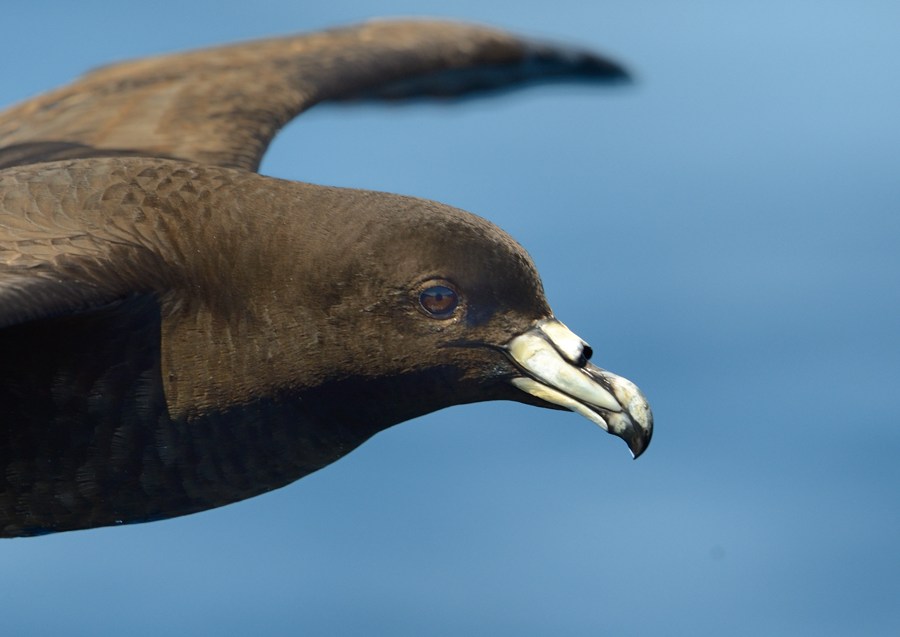
Black Petrel, a species suggested for assessing post-release survival, photograph by Kirk Zufelt
Mike Bell (Wildlife Management International) has produced a final report for the Conservation Service Programme of the New Zealand Department of Conservation that recommends satellite tracking injured seabirds following accidental capture by fishing vessels to ascertain their post-release survival.
The report’s executive summary follows:
“This report reviews methodologies and tracking devices used to study seabird survival and assesses their suitability for development of a future field-based project to determine post-release survival rates. With recent technological advances the use of miniature satellite tracking devices was determined to be the most effective method to assess the fate of released seabirds following accidental capture by fishing vessels. A range of operational, biological and environmental factors may constrain a tracking study of injured seabirds. Some of these factors have the potential to significantly impact the likelihood of successfully monitoring the post-release survival, and these are discussed.
Assessment of the health of live seabirds that have interacted with fishing vessels will first need to be carried out to select suitable individuals to track survival and ensure tracking maximises identifying cryptic mortality rates. Individuals with severe injuries that will not survive, and those with no injuries that will likely survive, should not be tracked. Birds with moderate injures where survival probability is uncertain should be tracked, as these provide the best opportunity to understanding true cryptic mortality rates. To achieve this a “Seabird Heath Assessment Tool” has been developed to guide future research.
It is recommended that a review be undertaken of existing seabird injury data, held by Fisheries NZ (FNZ) as recorded by fisheries observers on Observer Protected Species Interaction (PSI) forms, and electronic monitoring (EM) video footage, to categorise (using the health assessment tool presented here) and investigate the number, nature and extent of injuries sustained by seabirds returned alive at-sea, in order to refine the following field-based recommendation.
Considering the above factors, a field-based programme utilising satellite tracking with Teleonics TAV series Platform Transmitter Terminals (PTTs) is recommended as the best method to assess post-release survival of seabirds that interact with commercial fisheries. Although relatively expensive, this method provides the only method which is likely to return sufficient data on behaviour and post-release survival. Target species for tracking should include control groups (healthy seabirds), medium sized seabirds (i.e. black petrel, flesh-footed shearwater, and Buller’s shearwater) in FMA1 and FMA9, and albatross species in FMA5 and FMA6. The study should aim to track ≥30 birds from each group which would likely require a 3-5 year study period.”
Reference:
Bell, M.D. 2020. Investigation of options for assessing the post-release survival of seabirds that interact with commercial fisheries in New Zealand. Final Report for project INT2019-06 prepared by Wildlife Management International Ltd for the Conservation Service Programme, Department of Conservation. 33 pp.
John Cooper, ACAP Information Officer, 13 October 2020

 Español
Español  English
English  Français
Français